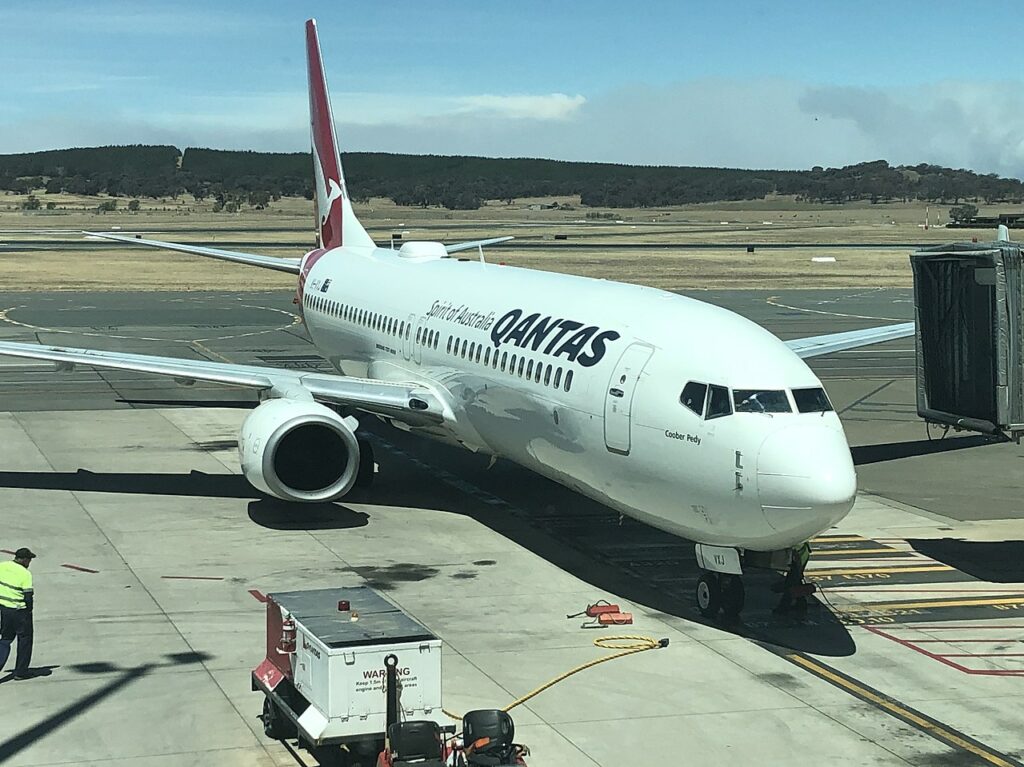LONDON – A scheduled Qantas flight bound for Fiji has made a precautionary return to Sydney this morning after flight crew received a fault indication suggesting a ‘potential mechanical issue’.
Qantas flight QF101, operated by a Boeing 737-800 registered VH-VZQ, had departed Sydney just after 8:30 AM local time. The aircraft spent approximately two hours in a holding pattern of the New South Wales coast before finally returning to Sydney as a precaution.

The aircraft subsequently made an uneventful landing at Sydney airport at approximately 10:50 AM local time. It was not the subject of an emergency or a priority landing.
According to the Australian national broadcaster ABC, a Qantas spokesman advised that the precautionary return was standard procedure after flight crew received a ‘fault indicator’.
For the Australian national flag carrier, it is the second mechanical issue they’ve experienced with a Boeing 737 – 800 aircraft in as many days.
Update on QF144 incident
Yesterday, Qantas flight QF 144 inbound from Auckland, New Zealand initially declared an emergency approximately one hour out from Sydney after the failure of one engine.
The emergency was downgraded to a PAN (potential assistance needed) level, and the aircraft subsequently made an uneventful landing at Sydney airport.
ATSB statement
The Australian Transportation Safety Bureau (ATSB) has now issued a statement via ATSB Chief Commissioner Angus Mitchell on the QF 144 incident on January 18, saying:
“Last night the Australian Transport Safety Bureau commenced a transport safety investigation into the in-flight engine failure incident involving a Qantas 737 aircraft during a flight from Auckland to Sydney.
The ATSB has assigned a team of three experienced transport safety investigators, with experience in aircraft maintenance, aircraft operations, and data recovery, to commence the evidence collection phase of this investigation.
At the ATSB’s request the operator has quarantined the aircraft’s cockpit voice and flight data recorders. Once downloaded, information from those recorders will be analysed at the ATSB’s technical facilities in Canberra.
Other likely investigation activities will include interviewing the flight crew, reviewing operator procedures, analysing weather information, examining any relevant engine components, and potentially attending any tear-down inspection of the engine.
Our investigators will now work methodically to progressively establish the incident’s sequence of events and contextual information, with a view to determining contributing factors and any underlying safety issues, which will be detailed in the investigation’s final report.
The scope of the investigation and its timeframe will be determined as the ATSB build its understanding of the nature of the event.
Passenger-carrying operations are the ATSB’s highest investigation priority, and, as with all ATSB investigations, if at any time during the course of this investigation we uncover any critical safety issues, we will immediately share those with relevant stakeholders so timely safety action can be taken.”









